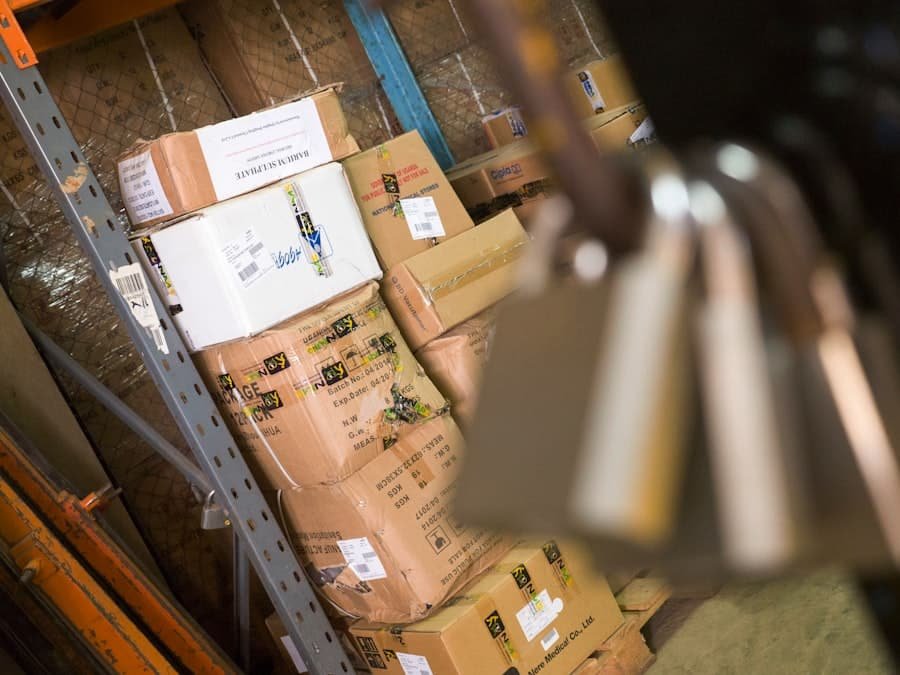Fast fashion has emerged as a dominant force in the global apparel industry, revolutionising the way consumers engage with clothing. This phenomenon is characterised by the rapid production of inexpensive garments that mirror the latest trends seen on runways and social media. The term “fast fashion” encapsulates a business model that prioritises speed and affordability, allowing retailers to respond swiftly to changing consumer preferences.
As a result, shoppers are inundated with a constant stream of new styles, often leading to impulsive purchases and a culture of disposability. The rise of fast fashion can be traced back to the late 20th century, when brands began to adopt strategies that enabled them to produce clothing at an unprecedented pace. Retailers like Zara and H&M pioneered this approach, creating a system that allowed them to design, manufacture, and distribute new collections in a matter of weeks rather than months.
This shift not only transformed the retail landscape but also altered consumer behaviour, fostering an insatiable appetite for novelty and variety in wardrobes. As fast fashion continues to thrive, it raises critical questions about sustainability, ethics, and the long-term implications for both the environment and society.
Summary
- Fast fashion is a term used to describe clothing collections that are based on the most recent fashion trends presented at Fashion Week in both the spring and the autumn of every year.
- The fast fashion business model is based on producing high volumes of clothing at low costs, with quick turnaround times from design to production to delivery to stores.
- Key components of fast fashion include outsourcing production to low-cost countries, using cheap and often unsustainable materials, and constantly introducing new collections to encourage frequent purchases.
- The impact of fast fashion on the environment is significant, with high levels of water and chemical usage, as well as large amounts of textile waste and carbon emissions from transportation.
- Ethical concerns in fast fashion include poor working conditions, low wages, and exploitation of workers in factories, as well as the use of animal products and unethical sourcing practices.
The Fast Fashion Business Model
At the heart of the fast fashion business model lies a complex interplay of design, production, and distribution processes that are meticulously orchestrated to maximise efficiency. Retailers employ a strategy known as “just-in-time” manufacturing, which minimises inventory costs by producing garments only as they are needed. This approach allows brands to keep their offerings fresh and relevant, ensuring that consumers are continually enticed by new arrivals.
The speed at which these companies operate is staggering; some can take a design from concept to store shelves in as little as two weeks. Moreover, fast fashion brands often rely on global supply chains that leverage low-cost labour markets. By outsourcing production to countries with cheaper labour costs, companies can maintain their profit margins while offering consumers affordable prices.
This model has led to the proliferation of “throwaway” fashion, where garments are worn only a few times before being discarded. The emphasis on rapid turnover means that quality is frequently sacrificed for quantity, resulting in poorly made items that contribute to a cycle of consumption and waste.
Key Components of Fast Fashion

Several key components underpin the fast fashion model, each contributing to its success and widespread appeal. One of the most significant elements is trend forecasting, which involves analysing cultural shifts, social media influences, and runway shows to predict what styles will resonate with consumers. Fast fashion retailers employ teams of trend analysts who monitor these factors closely, enabling them to create collections that align with current consumer desires.
Another crucial aspect is the use of technology in design and production processes. Advanced software allows designers to create digital prototypes quickly, while automated manufacturing techniques streamline production lines. This technological integration not only accelerates the creation of new garments but also enhances the ability to respond to market demands in real-time.
Additionally, marketing strategies play a vital role in fast fashion’s success; brands utilise social media platforms and influencer partnerships to generate buzz around new collections, driving consumer engagement and sales.
The Impact of Fast Fashion on the Environment
The environmental consequences of fast fashion are profound and far-reaching. The industry is one of the largest contributors to pollution globally, with significant emissions generated throughout the production process. From the cultivation of cotton to the dyeing of fabrics, each stage consumes vast amounts of water and energy.
For instance, it is estimated that producing a single cotton t-shirt requires approximately 2,700 litres of water—enough for one person to drink for two and a half years. Furthermore, the chemical runoff from dyeing processes often contaminates local water sources, posing serious health risks to communities. Waste generation is another critical issue associated with fast fashion.
The sheer volume of clothing produced leads to staggering amounts of textile waste; according to estimates from the Ellen MacArthur Foundation, around 92 million tonnes of textile waste are created each year. Much of this waste ends up in landfills, where synthetic fibres can take hundreds of years to decompose. Additionally, the practice of incinerating unsold garments releases harmful pollutants into the atmosphere, exacerbating climate change.
As consumers continue to embrace fast fashion’s allure, the environmental toll becomes increasingly unsustainable.
Ethical Concerns in Fast Fashion
Beyond environmental issues, fast fashion raises significant ethical concerns related to labour practices and workers’ rights. Many fast fashion brands rely on factories in developing countries where labour laws may be lax or poorly enforced. Reports have surfaced detailing exploitative working conditions, including long hours, low wages, and unsafe environments.
For example, the Rana Plaza disaster in Bangladesh in 2013 highlighted the dangers faced by garment workers when a factory building collapsed, killing over 1,100 people. This tragedy sparked global outrage and prompted calls for greater accountability within the industry. Moreover, the fast fashion model perpetuates a cycle of inequality by prioritising profit over people.
Workers often receive minimal compensation for their labour while corporations reap substantial profits from their efforts. This disparity raises questions about corporate responsibility and the moral implications of supporting brands that exploit vulnerable populations. As consumers become more aware of these issues, there is growing pressure on companies to adopt ethical practices and ensure fair treatment for all workers involved in their supply chains.
The Future of Fast Fashion

The Rise of Responsible Fashion
This shift in consumer behaviour has prompted some fast fashion retailers to explore more responsible approaches, such as incorporating recycled materials into their collections or implementing take-back programmes for used garments.
Challenges in Transitioning Away from Fast Fashion
However, transitioning away from traditional fast fashion practices poses challenges for many brands entrenched in this model. The pressure to maintain low prices while addressing sustainability concerns can create tension within corporate structures.
The Dangers of Greenwashing
Some companies may attempt to rebrand themselves as “sustainable” without making substantial changes to their operations—a practice known as “greenwashing.” As consumers become more educated about these tactics, they may demand greater transparency and accountability from brands.
Alternatives to Fast Fashion
In response to the challenges posed by fast fashion, various alternatives have emerged that promote more sustainable and ethical approaches to clothing consumption. One such alternative is slow fashion, which emphasises quality over quantity and encourages consumers to invest in timeless pieces rather than fleeting trends. Slow fashion advocates often promote local artisanship and sustainable materials, fostering a deeper connection between consumers and their clothing.
Second-hand shopping has also gained popularity as an eco-friendly alternative to fast fashion. Thrift stores, vintage shops, and online resale platforms allow consumers to find unique items while reducing waste associated with new garment production. This shift not only extends the lifecycle of clothing but also encourages a more mindful approach to consumption.
Additionally, rental services have emerged as a viable option for those seeking fashionable attire without the commitment of ownership; platforms like Rent the Runway offer consumers access to high-quality garments for special occasions without contributing to overconsumption.
The Pros and Cons of Fast Fashion
Fast fashion presents a complex landscape characterised by both advantages and disadvantages. On one hand, it democratizes fashion by making trendy clothing accessible to a broader audience at affordable prices. This inclusivity has empowered many individuals to express their personal style without financial constraints.
Furthermore, the rapid turnover of styles keeps the industry dynamic and responsive to consumer desires. Conversely, the detrimental effects on the environment and ethical implications cannot be overlooked. The unsustainable practices inherent in fast fashion contribute significantly to pollution and waste while perpetuating exploitative labour conditions in developing countries.
As society grapples with these challenges, it becomes increasingly important for consumers to critically evaluate their choices and consider alternatives that prioritise sustainability and ethical responsibility. The future of fashion may well depend on this collective shift towards more conscious consumption practices that honour both people and the planet.
A related article to the Fast Fashion Business Model is Start Your Ecommerce Business and Make Money. This article discusses the importance of starting an online business in today’s digital age and provides tips on how to make a profit through e-commerce. Just like fast fashion companies, e-commerce businesses rely on quick turnover and staying ahead of trends to attract customers and drive sales. By understanding the principles of e-commerce and implementing effective marketing strategies, entrepreneurs can build successful online businesses in the competitive retail industry.
FAQs
What is a fast fashion business model?
The fast fashion business model is a production and distribution strategy that focuses on quickly producing and delivering affordable, trendy clothing to consumers.
How does the fast fashion business model work?
Fast fashion brands produce clothing quickly and in large quantities, often in response to the latest fashion trends. These items are then sold at low prices to consumers through a network of retail stores and online platforms.
What are the key characteristics of a fast fashion business model?
Key characteristics of a fast fashion business model include rapid production cycles, frequent introduction of new styles, low prices, and a focus on mass-market appeal.
What are the environmental and ethical concerns associated with the fast fashion business model?
The fast fashion business model has been criticised for its negative impact on the environment, including high levels of textile waste and pollution. It has also been linked to ethical concerns such as poor working conditions and low wages for garment workers.
What are some examples of fast fashion brands?
Popular fast fashion brands include Zara, H&M, Forever 21, Primark, and Uniqlo, among others. These brands are known for their quick turnaround of new styles and affordable pricing.
